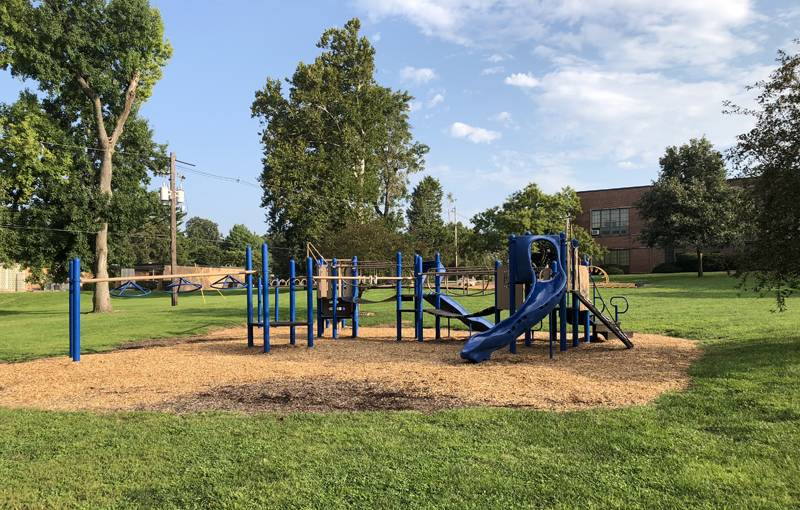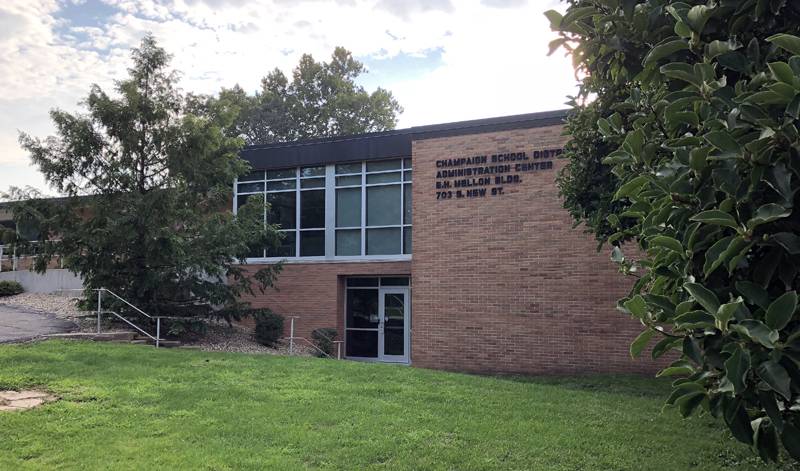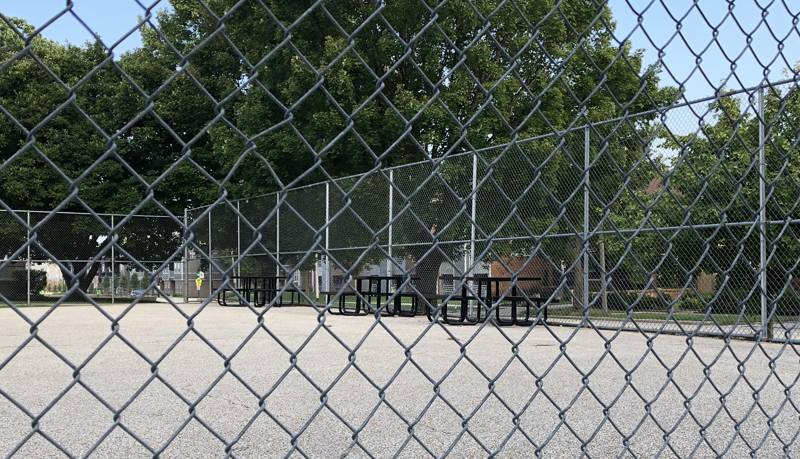When school lets out and the spring months melt away to summer, you may have seen billboards pop up around town with messages that remind us that summer’s not really all that fun for a kid when they’re hungry. You, like me, have probably reacted to that billboard in a renewed sort of shock as you drive back to work from your lunch at Black Dog. You may have come to the conclusion from that billboard that kids who rely on lunch at school during the school year aren’t getting fed during the summer because, well, when school’s out, food isn’t so accessible anymore for kids.
To counter this problem, both school districts in Champaign and Urbana have been providing free, nutritious meals during breakfast and lunch during the summer months. If you are under the age of 18, you can walk into any school in session or a participating site, like the Don Moyer Boys and Girls Club, during the summer and get breakfast and lunch for free. You do not have to be a resident of Champaign or Urbana or enrolled in summer school. According both the Champaign and Urbana school districts, our local schools are increasingly diversifying their menus, providing more hot, nutritious meals for breakfast and lunch, and progressively more desirable for kids based on surveys of local grade-school students during the school year, but increasingly during the summer months, too.
“We feed kids all school year long so I think when summertime comes and kids are on their own, there are kids that maybe don’t have access to the food they get in the school year,” Chief Financial Officer Carol Baker of Urbana School District 116 said. “It’s really important that we offer the summer meal program.”

Not only is lunch provided for free to all people under the age of 18 regardless of income during the summer months in both Champaign and Urbana, but also during the school year. This is because both school districts applied for the Community Eligibility Program (CEP) under the USDA and qualified to provide lunch for free to all. The USDA outlines the CEP as a “non-pricing meal service option that […] allows the nation’s highest poverty schools and districts to serve breakfast and lunch at no cost to all enrolled students without collecting household applications.” Both the Champaign and Urbana school districts have participated in the program for four years. All schools in Urbana are on the CEP program, while Champaign has six elementary schools enrolled, including Booker T. Washington, Dr. Howard, International Prep Academy, Garden Hills, Stratton, and Kenwood. Starting next year, Westview will start providing universal free lunch to students.
At the time of Urbana school district’s application process for federal funding in 2014, 71.5% of their entire student population qualified for free or reduced lunch. Baker said that the district conducted an analysis and determined that a huge group of families who couldn’t afford to pay for their kids’ meals, but were just a dollar or two over the income requirement to receive free lunch.
“We had so many people in the middle, that it became a very positive thing for us to apply for the CEP program, which has allowed us to provide meals throughout the entire year for anyone under the age of 18,” said Baker. “People were all over social media with posts like ‘this is going to save us 1,500 dollars as a family unit for my three kids to eat at no charge.’ They were posting very positive things. Families appreciated the burden being taken off of them.”

“One of the reasons that the Champaign school district also moved over to universal free lunch during the school year is that it helps speed up the whole process,” said Laura Dees, Director of Food Services for the Champaign Unit 4 School District. “We now do a tally sheet instead of students trying to learn a 6 digit code or remember to bring their lunch card. Everyone is fighting for minutes during the school day.”
It’s a different picture during the summer months. Out of Urbana’s entire student population at the four schools in session, only 10% of students are participating in the sites that provide free, universal lunch. In Champaign schools participating in the program, Dees says that their district provides around 6,000 lunches at universal, free lunch sites, and, during the summer it drops down to between 1,500-2,000 at their five participating schools and 3 program partner sites, including the Don Moyer Boys and Girls Club, the Douglass Community Center, and minors involved in summer programming at Parkland.
“We are always trying to find ways to improve participation in the program,” said Baker. “If we could provide a bus to take the food out to the kids, someway to get it to them instead of asking them to come to us. It’s hard for many families to get out to us. We’ve talked about this in our strategic planning the past. We would need to be able to buy a bus and be able to keep food warm and sanitarily protected. It’s going to be a matter of how we can get to the kids during the summer months.”
“I’d really like to see the public take advantage of our sites during the summer more. We are always looking to expand our summer programing,” said Dees. “If programs who serve children under the age of 18 are interested in partnering with the summer program, it’s helpful to know that an organization does not have to be affiliated with the Champaign school district. We are willing to also explore the option of looking at other places to serve.”
Even with all of the wonderful abundance of healthy, and increasingly desirable food available for kids during the school year and the summer months, community service providers and advocates that I spoke with on food programming emphasize that the problem of food insecurity isn’t going to fundamentally go away if the problem of poverty is ignored.
“I think people have a vision of what food insecurity looks like in the United States and in our community,” said Dees. “People don’t have to visually look a certain way to be food insecure, which means a household’s lack of consistent access to enough food for an active, healthy life.”
In his book, Anthropology of Food (1999), Johan Pottier says that the quantification of food insecurity is very difficult because it is next to impossible to determine who has eaten, what they have eaten, and whether it is full of variety, given that “households in reality are not neatly bounded units as population demographics depict, and access to food is often linked to other realms of life.” (1999:18) I went over to the YWCA to get Andrea Rundell’s help in contextualize to some of the research.
“Food is always going to come last when you have to pay your rent to make sure you don’t get an eviction notice, or pay your bills to keep your water and power on,” said Rundell, Executive Director of the YWCA of the University of Illinois. “The disparity in feeding people adequately stems from poverty. And poverty is racist. Poverty is sexist.”
Rundell says that she could talk for hours about the problem of feeding people, having worked for 9 years as the Director of Programs and Agency Relations at the Eastern Illinois Foodbank. She says that the largesse of the charitable food industry in the United States serves as a great indicator that the practices and systems that make it necessary to charitably provide food for adults and families are not being challenged. From her research and her experience in serving as a capacity-building and supervising liaison for over 200 food pantries in 14 counties (including Champaign) in Illinois, she says that one of the reasons that she left the job is that she could not do the charitable work and address the root causes at the same time.
“The charitable food service sector is heavily reliant on donations from corporations, corporations who mostly do not treat their workers well and underpay them,” Rundell added. “As a food banker, to call out the practices and systems that make it necessary to charitably feed people is to shoot your organization in the foot. More anti-poverty advocacy is possible for public institutions and organizations who are reliant on federal funding to call out the government; but, it is still difficult.” She stresses that we can start making changes educating each other on the issues and by electing people who are going to work with communities to address the structural problems that lead to food insecurity.
I spoke with Tanisha-King Taylor, Director of the University of Illinois Tenant Union, Adjunct Professor of the School for Social Work, and democratic nominee for the district 10 seat of the Champaign County Board, to talk about the root causes of food insecurity from a social work lens. In her experiences in direct service work with vulnerable populations, she explains that if all people were working in jobs that paid a meaningful wage and if communities had more robust mental health resources and more programs available as a community solution rather than putting people in jails, then families and individuals wouldn’t have the added anxiety of not knowing where their next meal is coming from.
According to a report released by United Way in 2017, food insecurity had dropped from 19.2 percent in 2011 to 16 percent in 2016 of the total population in Champaign County, Illinois. The same data indicated that while 20.5% of residents in the county were living in poverty, only 4% were unemployed. What this data tell us is that the majority of people who are food insecure are employed but are not making enough money to provide for their families.
“How you address food insecurity and poverty at large is by raising the minimum wage. How you address poverty is by electing people in your community who are going to make vulnerable populations a priority and by getting engaged with groups advancing anti-poverty initiatives in your community, such as the Cunningham Township,” said Taylor.
People agree that the system of charitably feeding people, although needed as an immediate remedy, is not the solution. While people may disagree on how communities should feed people, the emphasis on coming together to address poverty is the longer-term work that is ahead of us. If you would like to learn more about how to support anti-poverty and homelessness work in our area, community advocates say talk to your city council representative about this issue, talk with each other, and get connected to people who are working on the ground on anti-poverty actions, such as the Cunningham Township. For the sake of giving deeper attention to this issue, let’s save this for a part two of this article. To be continued, as they say.
Photos by Jessica Hammie








